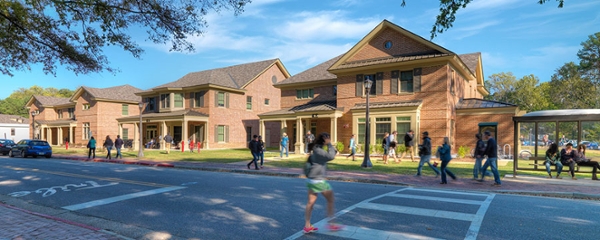The newly-formed Multicultural Greek Council was created with the intention of forming a more inclusive Greek experience at the College of William and Mary.
In joining the ranks of the College’s three existing Greek life councils — the Interfraternity Council, the National Pan-Hellenic Council and the Panhellenic Council — MGC provides a platform for multicultural Greek organization members to have a voice on par with those of the members in other fraternities and sororities.
Councils hold Greek organizations to membership standards and accountability.
The creation of the MGC in April 2017 was spurred by the arrival of the second multicultural sorority for non-black students of color on campus last fall, Delta Phi Omega.
Hermanidad de Sigma Iota Alpha, previously had been the only Greek organization that did not belong to one of the three existing councils.
According to Assistant Director of Student Leadership Development Joe Wheeless, it had been difficult to integrate SIA completely into fraternity/sorority life because it was the only Greek organization at the College aimed at students of color who were not members of one of the historically black fraternities or sororities.
It has been long talked about since SIA came on campus,” Wheeless said. “We supported them, but we couldn’t give them the same authority that the councils had.”
“It has been long talked about since SIA came on campus,” Wheeless said. “We supported them, but we couldn’t give them the same authority that the councils had.”
Allison Ramirez ’19, vice president of the MGC and member of SIA, said that it was difficult being part of the only Greek organization without a council.
Now, with two multicultural Greek organizations in the mix, Ramirez said that creating a governing council became a priority for the members of DPO and SIA and for the Office of Fraternity and Sorority Life. Last spring, representatives from the two sororities worked with the Office of Fraternity and Sorority Life to develop a constitution for the MGC.
Ramirez said that she is determined to make sure that the hard work of DPO and SIA pays off. As vice president, she said she intends to seek more recognition and support for the MGC on campus, and to foster a more integrated role in fraternity and sorority life for multicultural Greek organizations.
Chapter formation for prospective Greek organizations depends on the level of student interest. According to Wheeless, the College has been approached by national organizations about bringing multicultural Greek organizations to campus, but student interest didn’t materialize.
However, he said that the MGC was created to be flexible toward prospective multicultural organizations and focused on the future of diversity at the College. For this reason, a Greek organization that does not fall under the jurisdiction of any of the other three councils is eligible to be a part of MGC.
I applaud the students for allowing that space to be sustainable and long term,” Wheeless said. “It provides students of color additional opportunity to have the fraternity and sorority experience if they want it. It cements them as part of our community.”
“I applaud the students for allowing that space to be sustainable and long term,” Wheeless said. “It provides students of color additional opportunity to have the fraternity and sorority experience if they want it. It cements them as part of our community.”
Ramirez said that she sees the establishment of MGC as creating opportunities for inclusion in a school where only 30 percent to 35 percent of the student body are people of color.
“The Panhellenic Council and the Interfraternity Council still dominate, so having a council on equal footing with them is important,” Ramirez said.
The other council for students of color is the National Pan-Hellenic Council (NPHC), and it is the platform for the nine historically African American fraternities and sororities at the College. Ramirez said that it was important for people of color to have their voices heard, and she commended the NPHC for asserting its role as an equal player in William and Mary fraternity/sorority life.
President of the MGC Enaita Chopra ’18, a member of DPO, said she seconded Ramirez’s sentiment about balanced council standing.
“Especially with William and Mary being predominantly white, MGC lets people know there’s something there for them,” Chopra said.
As president, she said she hopes the introduction of the MGC will make it easier for students to join existing multicultural groups or to bring new chapters to the College.
Ramirez said that she herself took a leap in deviating from the norm of rushing a Panhellenic sorority.
“Before, I was considering rushing a Panhellenic sorority,” Ramirez said. “But I set a goal in college that I would get in touch with my Puerto Rican side. I can’t speak for everyone, we all have different experiences, but it helps us come together and celebrate our heritages.”
For Chopra, the MGC is first concerned with making students of color feel safer in taking part in Greek life. She said she affirms the MGC’s commitment to celebrating other cultures and welcomes initiatives geared toward diversity at the College.
“We’re taking steps forward,” Chopra said. “We do not step back.”

